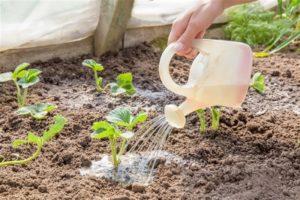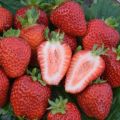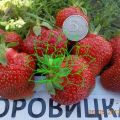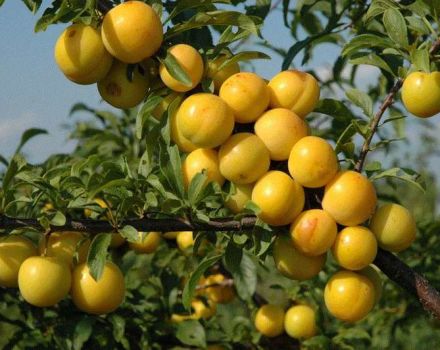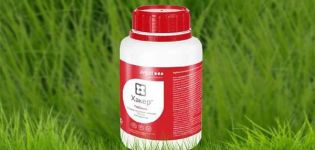The best varieties of remontant strawberries, reproduction, cultivation and care
Repairing strawberry varieties are characterized by the fact that they bear fruit several times in one season. It is especially convenient to plant such hybrids on your site when living in the south. Over the season, remontant varieties can bear fruit up to 3-4 times. Strawberry fruiting ends in autumn.
Content
The nuances of growing remontant strawberries
The agricultural technique of remontant strawberries does not differ significantly from the cultivation of ordinary varieties. These strawberry hybrids are suitable for growing in a greenhouse, outdoors, or even at home on a windowsill.
Repair strawberries, like ordinary varieties, are unpretentious to care and grow on almost any type of soil. The culture propagates by dividing the bush, seedling and mustache.
Seedlings are planted in a permanent place in September. If, after planting, the bushes begin to bloom, the inflorescences are cut off. With the onset of cold weather, the soil in the beds is mulched with straw or peat.
Advantages and disadvantages of remontant varieties
Benefits of remontant strawberries:
- The remontant strawberry differs from ordinary strawberry in that it bears fruit 3-4 times per season.
- Unpretentious cultivation.
- High productivity.
- The berries grow large in size.
- Hybrids are resistant to disease.
- There are varieties with red and white berries.
- Taste qualities.
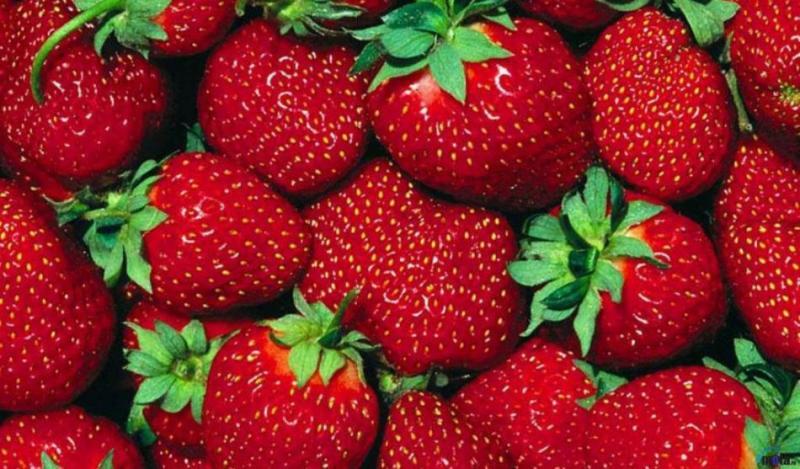
Disadvantages of varieties:
- Bushes give a good harvest for the first 2-3 years, then strawberries are depleted.
- Despite its unpretentiousness, strawberries are demanding on moisture and lighting.
With proper care, you can increase the fruiting period. There are no significant drawbacks in such varieties, with the exception of a decrease in yield.
The best varieties of remontant strawberries
Among all the remontant hybrids, several of the best can be distinguished, which are superior in characteristics to other varieties.
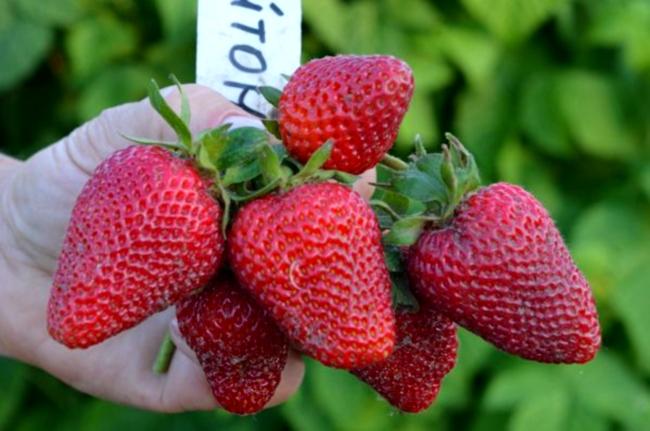
Autumn fun
The Autumn fun variety bears fruit until the onset of frost in September. And when grown in a greenhouse - until the end of October. Autumn fun bears fruit twice a season - in June and August. There are 10-15 peduncles in a bush, up to 15 berries in one peduncle. Berries weighing 20-25 g, red hue, the pulp is sweet and juicy.Differs in resistance to strawberry mites and nematodes.
Russian size
The maximum weight of berries is from 40 to 50 g. The pulp is dense and juicy. A variety for dessert purposes. The bushes are medium-sized, strongly leafy. Strawberry deep red hue. Fruiting in June and early August.
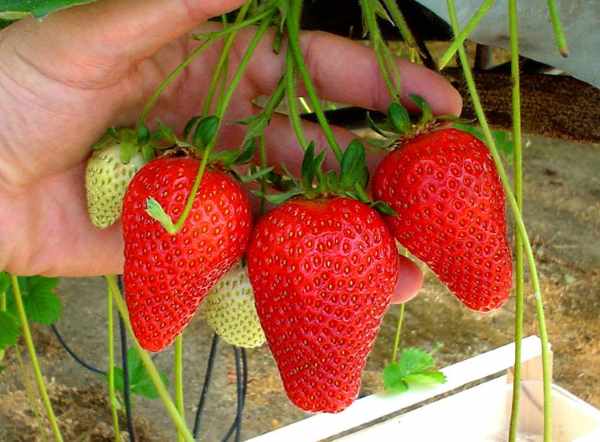
Galya Chiv
Galya Chiv belongs to the late varieties of remontant strawberries. Galya Chiv is not suitable for transportation because of too soft berries. Up to 20 ovaries are formed in the peduncle. The mass of ripe berries ranges from 20 to 70 g. At the first fruiting, the largest berries grow. In the second, smaller ones.
Vima Rina
Vima Rina is a large-fruited variety, the weight of the berries is from 30 to 45 g. The berries are cone-shaped, red in color. The pulp is juicy, but at the same time dense, sugary in taste. Up to 850 g of fruits are harvested from one bush per season. Semi-spreading bushes, medium leafy.
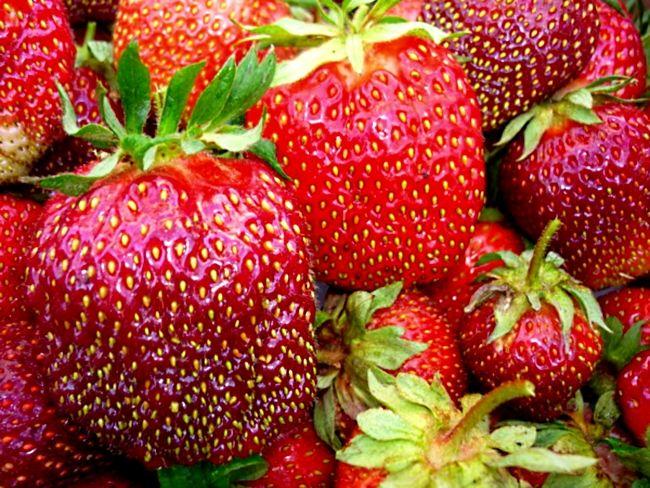
Diamond
Large-fruited hybrid, berries grow up to 20-45 g. The pulp is dense, not very juicy, but sweet. Thanks to this quality, the variety is suitable for long-term transportation. The diamond rosette is well developed, the bush is strongly leafy. The leaves are large.
Selva
A high-yielding variety, up to 1 kg of berries are harvested from one bush. Ripens early. Fruiting begins in early June. The fruit is conical in shape, the tip is slightly pointed. The weight of the fruits ranges from 25 to 75 g. The shade of the berries is rich red, the surface is glossy. The advantage of the variety is winter hardiness.
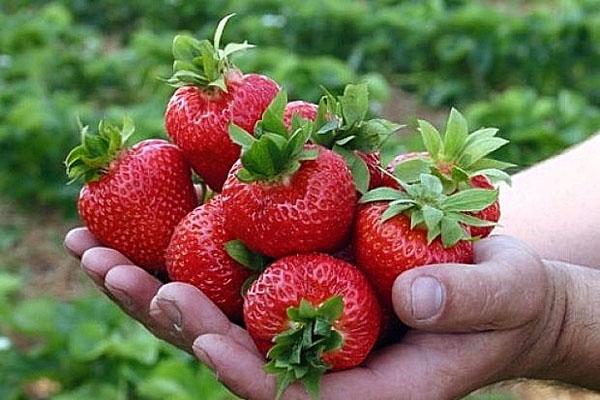
Queen Elizabeth 2
A winter-hardy hybrid that tolerates spring frosts. Leafy bushes with a well-developed leaf rosette. Early fruiting, the first ripe berries appear at the end of May. Strawberries finish bearing fruit in September. The berries are large, weighing up to 55 g.
Novel
Strawberries Roman of the correct teardrop shape, the tip is pointed. The fruit has a strong aroma and sweet flesh. The fruiting period is long, starting in mid-May and ending in October. When grown in a greenhouse, bears fruit within 10 months.
Lyubasha
Berries of the Lyubasha variety are medium-sized, weighing about 22 g. The pulp is sweet, with a high sugar content. The foliage is medium in size, with pubescence. Differs in resistance to diseases and temperature fluctuations.
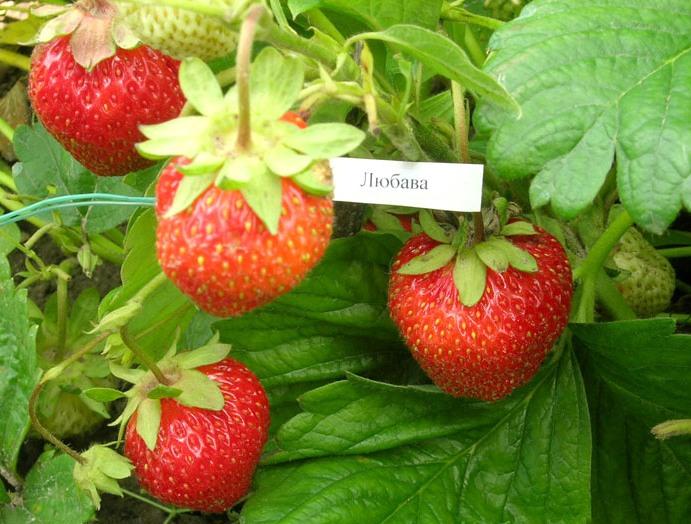
Reproduction methods
Remontant hybrids have three breeding methods - seedling, mustache and bush division.
Seedling method
Strawberries can be propagated by seedlings. But this growing method is laborious and time consuming. It is advisable to purchase seeds from trusted sellers. Seeds are planted in mid-February.
Growing by seedling method:
- Pour loose soil into the box and pour abundantly with water.
- Spread the seeds on the surface of the soil and press them lightly into the ground with your finger.
- It is not recommended to cover seeds with soil.
- Cover the boxes with glass or cling film to create a greenhouse effect.
- The film or glass is regularly removed, the soil is watered and aired.
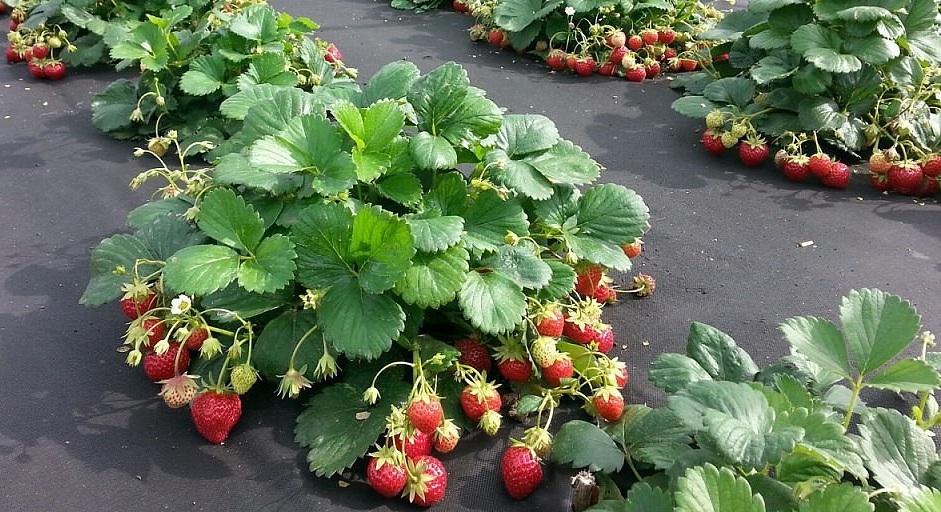
Strawberry seedlings dive when three full-fledged leaves appear on the bushes. They are planted in the ground after the establishment of warm weather.
Mustache
The easiest way to propagate strawberries is a mustache. To do this, a mustache with already grown bushes is cut off from adult bushes. The stem, which connects the mother plant and the babies, is pruned. And the bushes are planted in holes at a distance of 30-40 cm from each other. Water abundantly at the end of planting.
By dividing the bush
Strawberries without whiskers are grown by dividing the bush. Old overgrown bushes are suitable for this type of reproduction. They are cut into several parts with a shovel. Then carefully separate all the parts. It is undesirable to shake the earth from the roots. They are transplanted into the holes in a new place. Water abundantly at the end of the transplant.
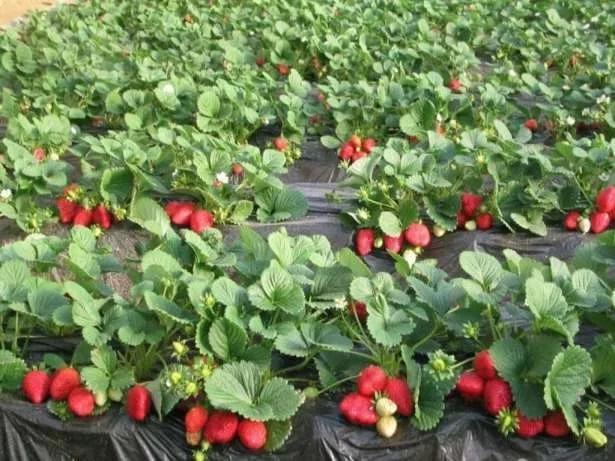
Features of growing remontant varieties
It is not difficult to grow remontant strawberries.The main thing is to pay attention to lighting, humidity and top dressing.
Boarding time
Planting remontant strawberries begin in the spring, at the beginning of May. By July, the bushes are already beginning to bear fruit. Some summer residents prefer to plant seedlings in autumn or August. In summer, planting strawberries is also possible, but undesirable. The optimal time for breeding strawberries is still considered the end of spring.
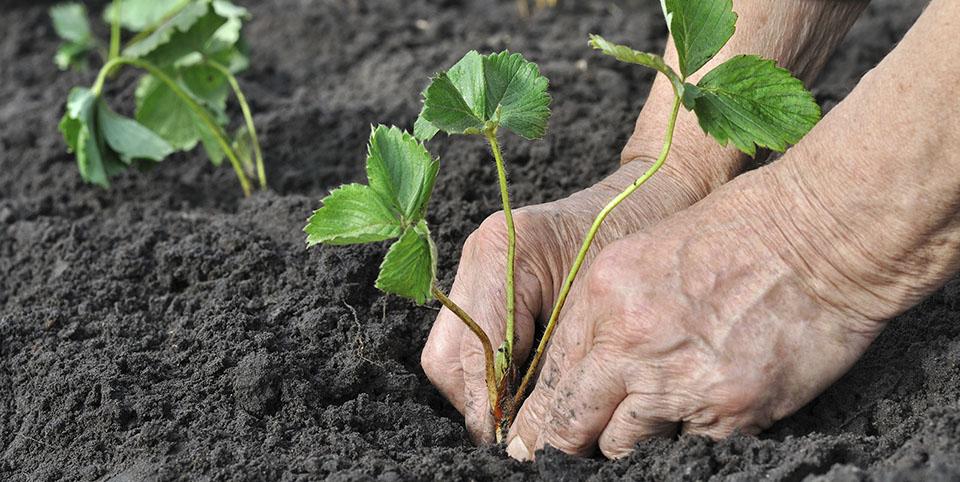
Selecting and preparing a landing site
It is recommended to plant strawberries after the growth of the following crops:
- radish;
- garlic;
- parsley;
- calendula;
- legumes;
- beet;
- carrot.
It is not recommended to grow where such crops grew:
- cabbage;
- raspberry;
- potatoes;
- tomatoes;
- cucumbers.
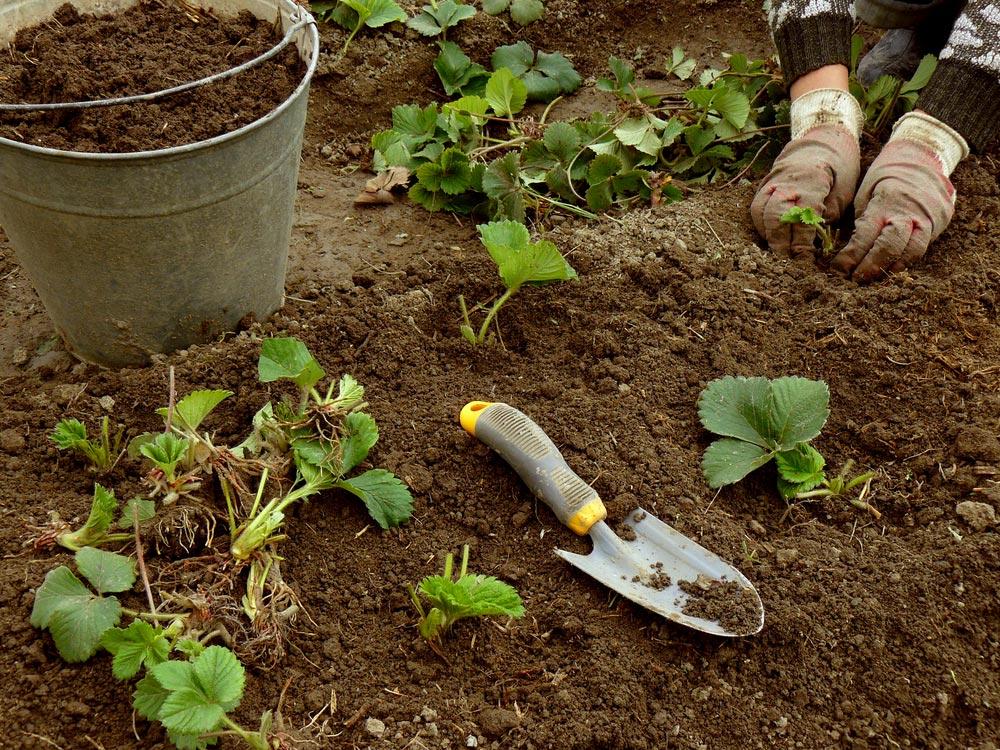
The soil for the beds is prepared in the fall. The soil is cleared of leaves and weeds, and the soil is dug up. Rotted manure or bird droppings are introduced. For planting strawberries, they choose areas on a hill that are in the sun for most of the day.
Preparation of planting material
It is not necessary to prepare seedlings before planting. Strawberries take root well after planting in a new place. A few hours before planting, the bushes can be held in a growth activator. This measure will be sufficient.
Landing technology
Most often, strawberries are planted by dividing a bush or a mustache. But the seedling planting technology does not differ from the first two types of planting.
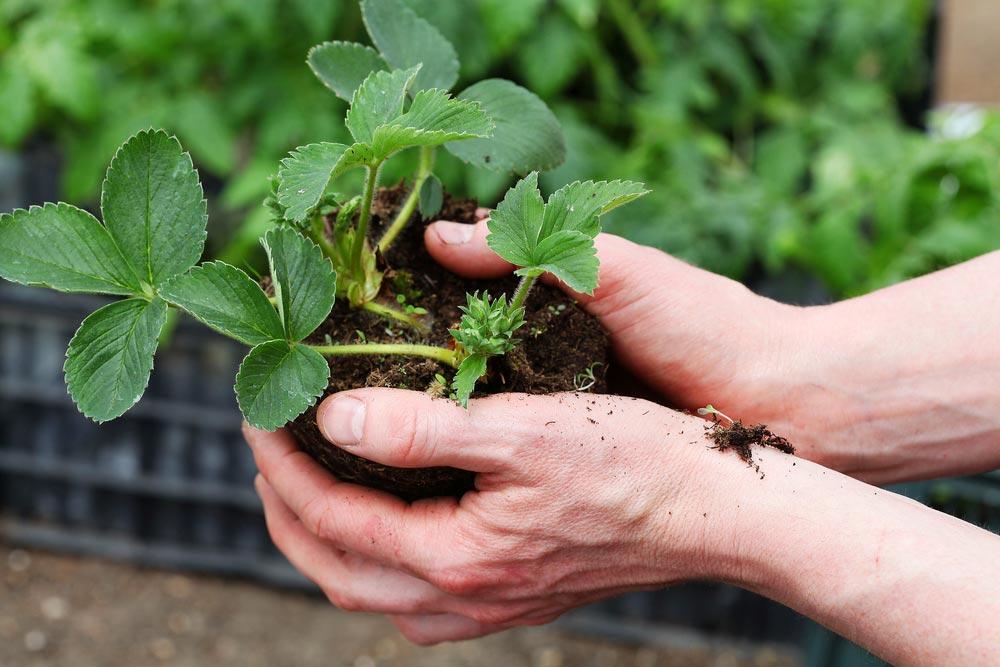
How to transplant strawberries:
- Dig up the soil, mix it with fertilizers.
- Make holes to a depth of 20-30 cm, the width of the hole is 50-55 cm.
- In the open field, remove all weeds before planting seedlings.
- Place the seedling in the hole, straighten the roots and bury with soil.
- Sprinkle with plenty of warm water.
After planting, the strawberries are abundantly watered. Only warm water is used for irrigation. Humidification with cold water leads to the development of fungal diseases.
Rules for caring for remontant strawberries
Caring for remontant strawberries is no different from caring for regular varieties.
Watering and fertilizing
The remontant varieties will have to be watered more often than ordinary varieties due to the fact that the root system is closer to the soil surface.
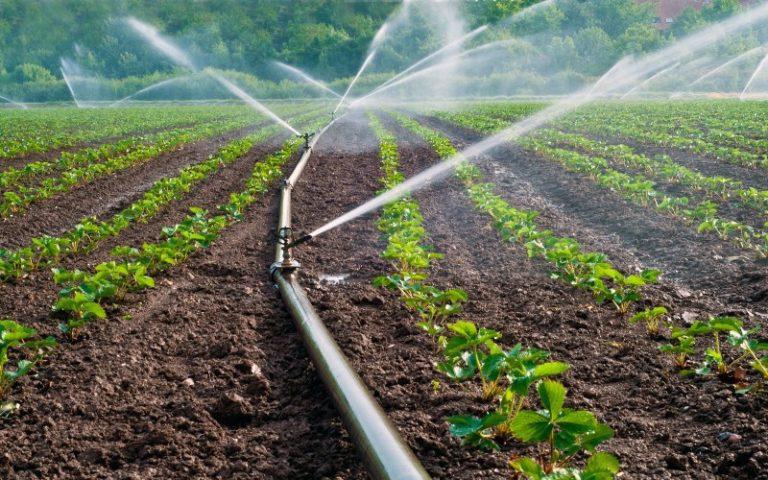
It is necessary to fertilize plants several times per season. You will have to feed the strawberries several times per season due to frequent fruiting. Top dressing is carried out 4 times:
- In late May, strawberries are fed with urea.
- The second time, mineral and organic fertilizers are applied during the flowering period (nitrogen and liquid manure are used).
- Then they are fed after the first fruiting.
- The last time feeding is applied before the onset of cold weather. The preparations "Kornevin" or "Solution" are introduced into the soil.
If the bushes have become too leafy, feeding is stopped.
Pruning
Cropping is often unnecessary. Pruning is carried out only in the fall after the entire crop has been collected. On strawberry bushes, remove the lower dried leaves. It is undesirable to touch the upper leaves so as not to damage the fruit buds. Sharp garden shears are used for pruning.
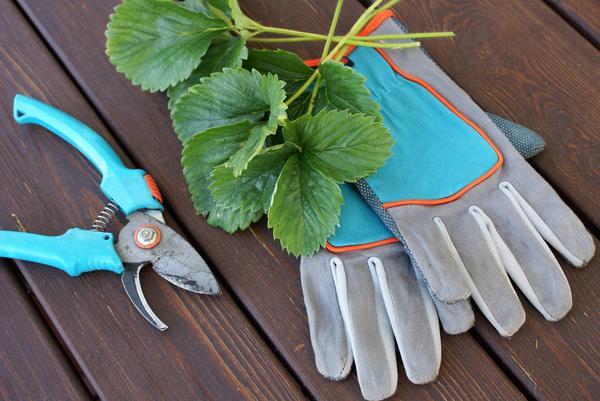
Mulching
After pruning in the fall, the soil in the beds is mulched. Sawdust, straw or peat are used as mulch. The layer should be at least 15 cm. Mulch not only retains heat in winter, but also prevents moisture from quickly evaporating in summer and autumn. This is very important, because remontant strawberry varieties prefer to grow on a wet substrate due to the superficial arrangement of the roots.
Preparing for winter
It is necessary to prepare strawberries for winter in the northern and central regions where winters are cold. In addition to mulching, the bushes are covered with spruce branches. A few weeks before the onset of cold weather, the soil is no longer watered.
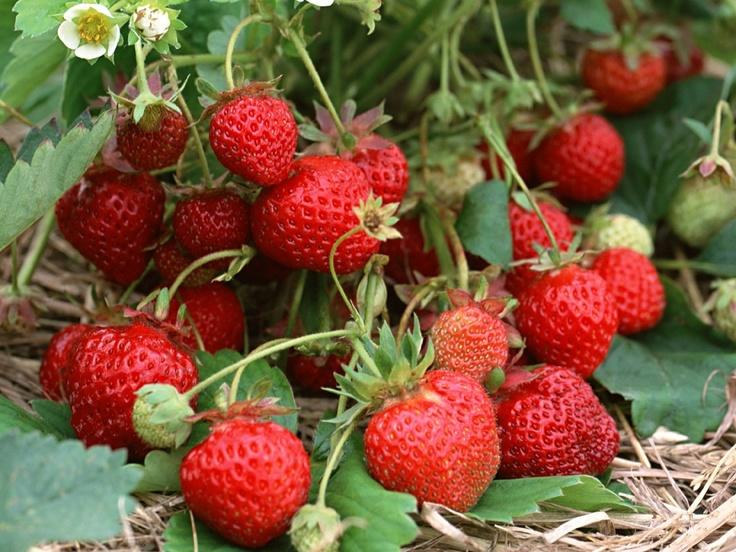
Diseases and pests
Strawberries suffer mainly from fungal diseases. Among the common diseases are:
- verticillary wilting;
- gray rot;
- white rot;
- anthracnose;
- late blight;
- brown spotting;
- white spot;
- powdery mildew;
- brown spot.
For diseases, fungicides and biological products are used to treat bushes. For example, drugs "Aktara", "Nurell-D", "Ridomil", "Topaz" are effective. When signs of disease appear, strawberries are processed before flowering.
It is not recommended to process bushes during fruiting. For preventive purposes, the procedure is repeated after harvesting.
Pests appear in the spring. Most insects hibernate in the soil and lay their larvae there.
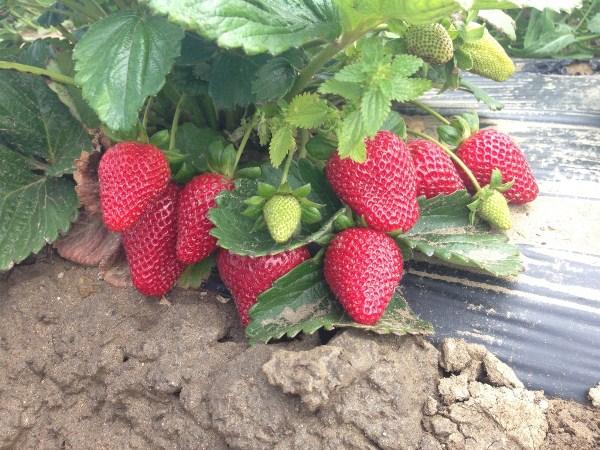
The following insects are found on strawberries:
- aphid;
- slugs;
- strawberry mite;
- slobber penny;
- spider mite;
- ants;
- tobacco thrips.
Strawberries begin to treat insects immediately after they appear. For spraying, use a soap solution, decoctions of chamomile, celandine, wormwood, yarrow. Also in the beds are planted calendula, garlic, marigolds. The smell of these plants repels insects. From slugs, mint and lavender are scattered in the beds.
The bear is dangerous for strawberries. With sharp pincers, she cuts off the roots of strawberries. To destroy the bear, traps with chemicals are set in holes. After harvesting, the soil in the beds is dug up and all weeds are destroyed. Fallen leaves must be removed from the site, insects often hibernate in it.
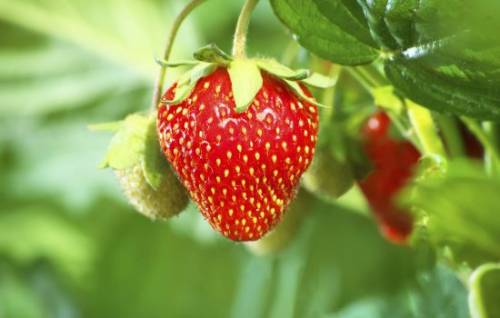
Possible problems
The following problems arise when growing strawberries:
- Strawberries do not bloom, but only give a mustache.
- The bushes are covered with white or rusty spots.
- Does not bear fruit a second time.
- The yield decreases.
- Plants grow deciduous mass.
Most of the problems with growing strawberries arise from a lack of nutrients in the soil. In addition, with prolonged growth in the same place, strawberries begin to degenerate. Dense planting also has a negative impact on yields.
In the event that the strawberries begin to grow deciduous mass, you should stop feeding it. An excess of nutrients leads to lower yields.
